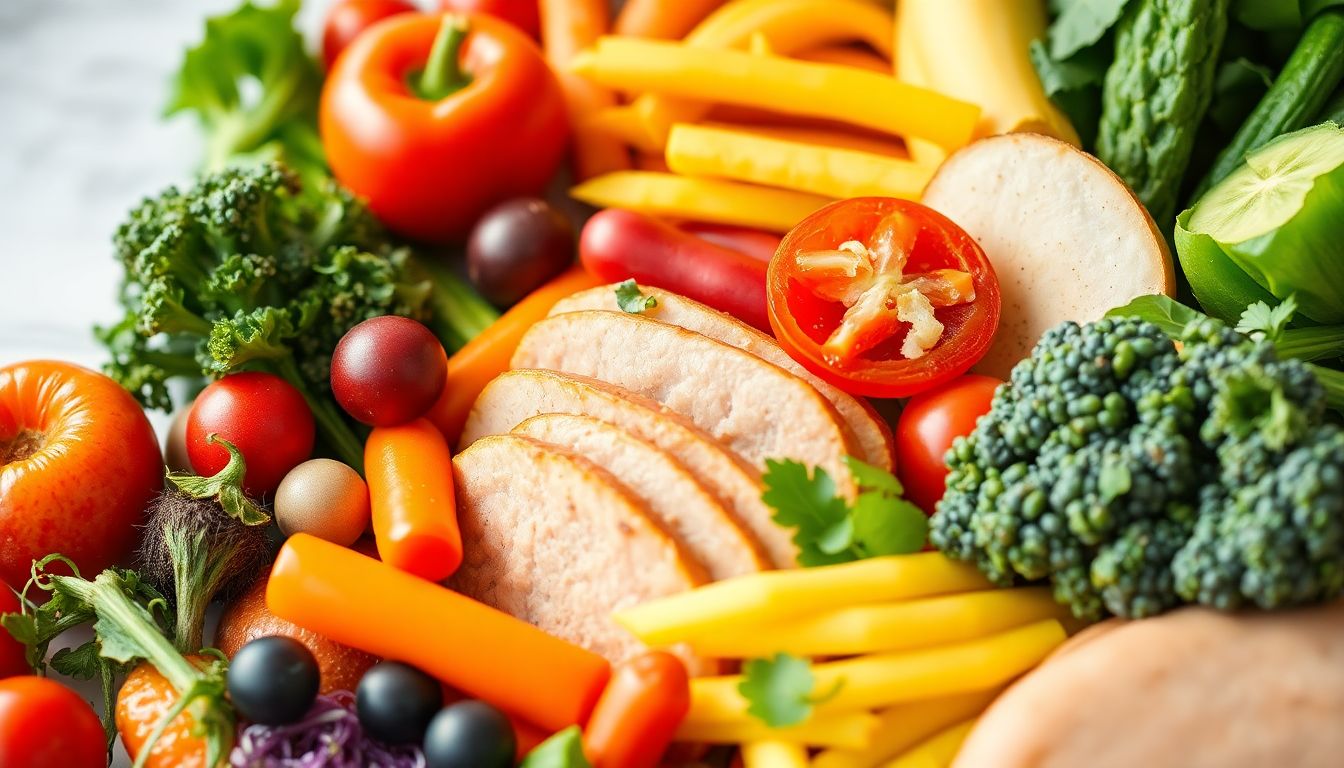
Easy Tips for Slashing Sodium in Your Diet
High sodium intake is linked to increased blood pressure, which can lead to serious health issues like heart disease and stroke. In the United States, the average adult consumes about 3,400 milligrams of sodium daily—far exceeding the recommended limit of 2,300 milligrams. Worldwide, excessive salt consumption is a growing concern, affecting millions and contributing to health problems. Reducing sodium is vital not just for heart health but for overall well-being.
Understanding Sodium Sources in Your Diet
Hidden Sodium in Processed Foods
Processed foods often hide high levels of sodium. Common culprits include:
- Canned soups: Often loaded with sodium for flavor and preservation.
- Frozen meals: Quick but usually high in salt content.
- Snack foods: Chips, crackers, and pretzels can pack a salty punch.
When shopping, check nutrition labels meticulously. Look for the sodium content per serving, and remember that “low sodium” should ideally mean 140 mg or less per serving.
Sodium in Restaurant Meals
Restaurant meals can contain much more sodium than homemade dishes. On average, a single restaurant meal can have over 2,000 mg of sodium. To eat healthier, consider these strategies when dining out:
- Ask for dressings or sauces on the side: This allows you to control the amount you use.
- Choose grilled over fried: Grilled items typically have less added salt.
- Request no added salt: Most places will accommodate this request.
Simple Swaps for Lower-Sodium Cooking
Flavor Boosters Beyond Salt
Replacing salt doesn't mean sacrificing flavor. Explore these alternatives:
- Herbs and spices: Try basil, rosemary, or cumin.
- Citrus: Use lemon or lime juice for a zesty kick.
- Garlic and onions: These can enhance flavor without the extra sodium.
Example Recipe: A chicken stir-fry with garlic, ginger, bell peppers, and a splash of lemon juice makes a tasty, low-sodium meal.
Choosing Low-Sodium Ingredients
There are many low-sodium substitutes you can use. For instance:
- Low-sodium soy sauce instead of regular soy sauce.
- Unsalted broth instead of regular broth.
- Fresh or frozen fruits and vegetables rather than canned ones, which often include added salt.
Make it a habit to choose fresh produce and limit your intake of highly processed foods.
Reading Nutrition Labels Effectively
Deciphering the Nutrition Facts Panel
Understanding the % Daily Value (%DV) for sodium can help manage intake. Here’s a quick breakdown:
- 5% DV or less: Low sodium.
- 20% DV or more: High sodium.
Always check sodium content per serving, especially when buying in bulk, as total sodium can add up quickly.
Spotting Marketing Tricks
Some products claim to be “healthy” but can still be high in sodium. Watch out for labels that say:
- “Reduced sodium”: This may still have a lot compared to regular products.
- “Heart healthy”: Always check the sodium level.
Aim for products with transparent labels showing lower sodium values clearly.
Gradual Sodium Reduction Strategies
Starting Slowly to Avoid Taste Shock
Suddenly cutting back on salt can shock your taste buds. Instead, try these steps:
- Reduce sodium gradually: Cut back a little each week.
- Use less salt over time: Start by using half of what you usually add.
- Experiment with flavors: Discover new herbs and spices.
Involving Your Family in the Change
Encouraging family participation can make the transition easier. Consider these ideas:
- Cook together: Create meals focusing on lower sodium options.
- Share facts about sodium: Educate them about health benefits.
- Plan meals as a family: Make it a fun activity!
There are many family-friendly low-sodium recipes available online to inspire you.
Maintaining a Low-Sodium Lifestyle Long-Term
Tips for Long-Term Success
Sticking to a low-sodium lifestyle can be challenging. Here are some ways to maintain motivation:
- Track your intake: Use an app to monitor sodium levels.
- Join a group: Find support with friends or online communities.
- Set achievable goals: Small, realistic targets can help sustain efforts.
Conclusion
Cutting back on sodium is a crucial step toward better health. By understanding sodium sources, making simple swaps, and reading labels effectively, you can significantly improve your eating habits. The journey to reducing sodium intake doesn’t have to be overwhelming; start with small changes today for long-term benefits. Embrace this opportunity for a healthier lifestyle—your heart will thank you.
Comments
Post a Comment